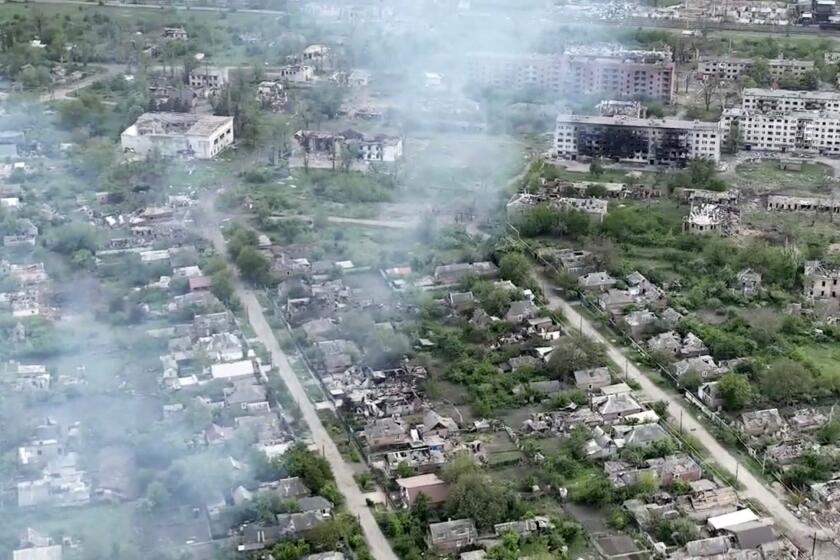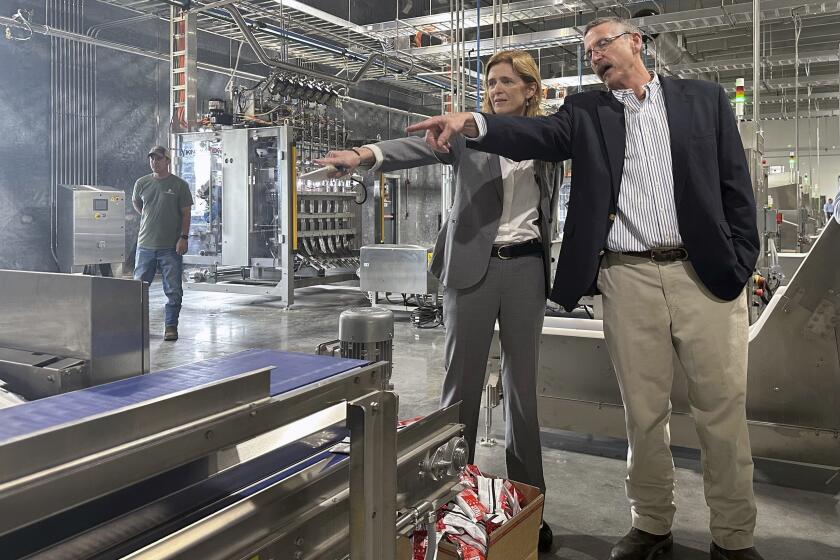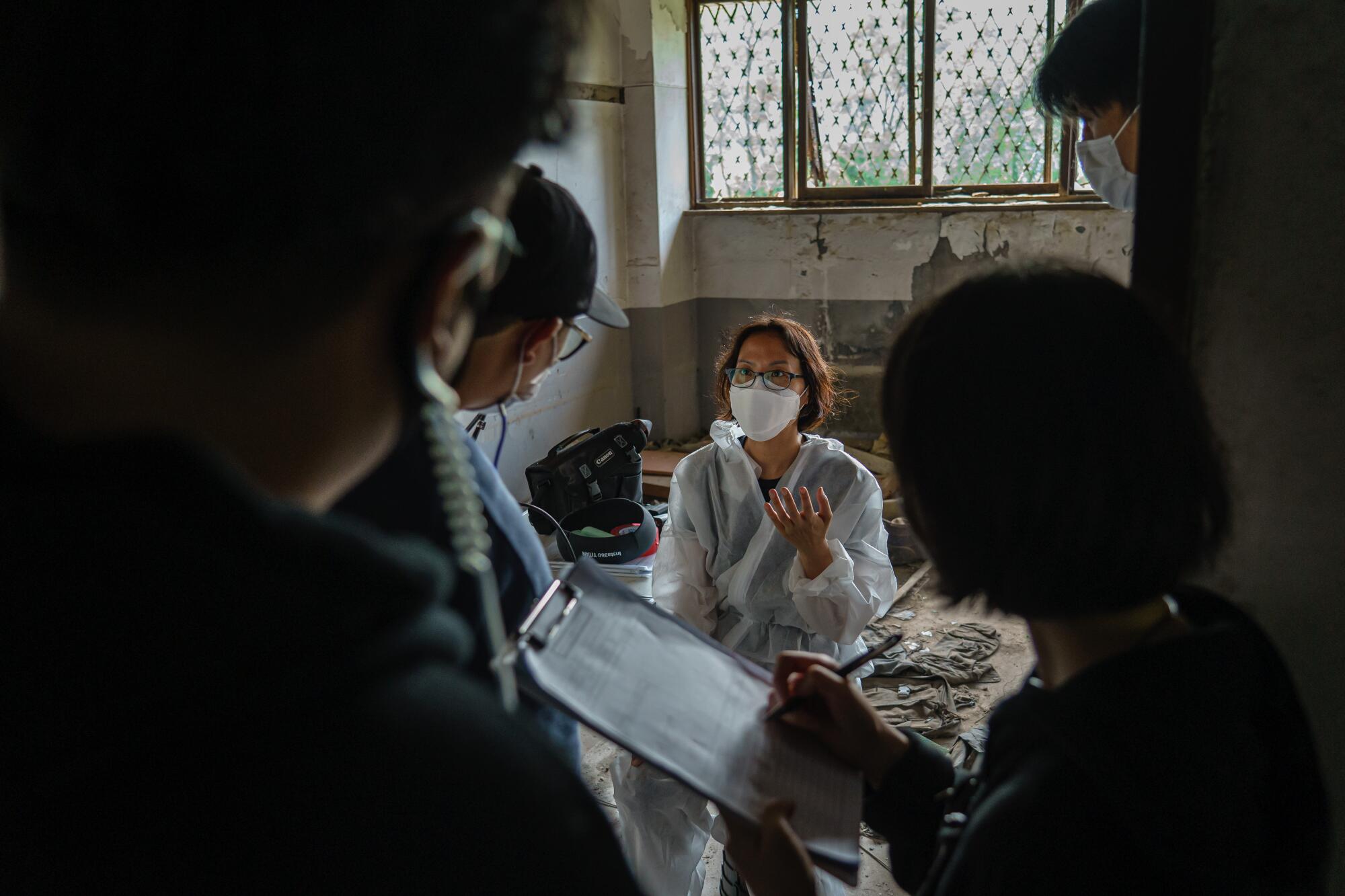
The story had been brewing in her for years — a tale of disease, isolation and a state’s control over women’s bodies during a troubling chapter in South Korea’s not-so-distant past.
Gina Kim’s virtual reality film will immerse viewers in the life of a “camp town” prostitute catering to U.S. troops stationed in the country in the 1970s. The narrative will focus on a day her character spends locked in a government-run treatment center, being pumped with antibiotics for a suspected case of venereal disease.
Kim, a film professor at UCLA, hadn’t planned on shooting at a time when much of what her protagonist experienced — rudimentary contact tracing, stigmatization from infection, quarantine and government control over citizens’ health — would overlap with the day-to-day lives of millions around the globe.
But to tell the story in the midst of the COVID-19 pandemic, Kim would fly across the Pacific, undergo a 14-day quarantine and sheath herself in a biohazard suit to make the film that came to feel more relevant to today’s world than she could have imagined.
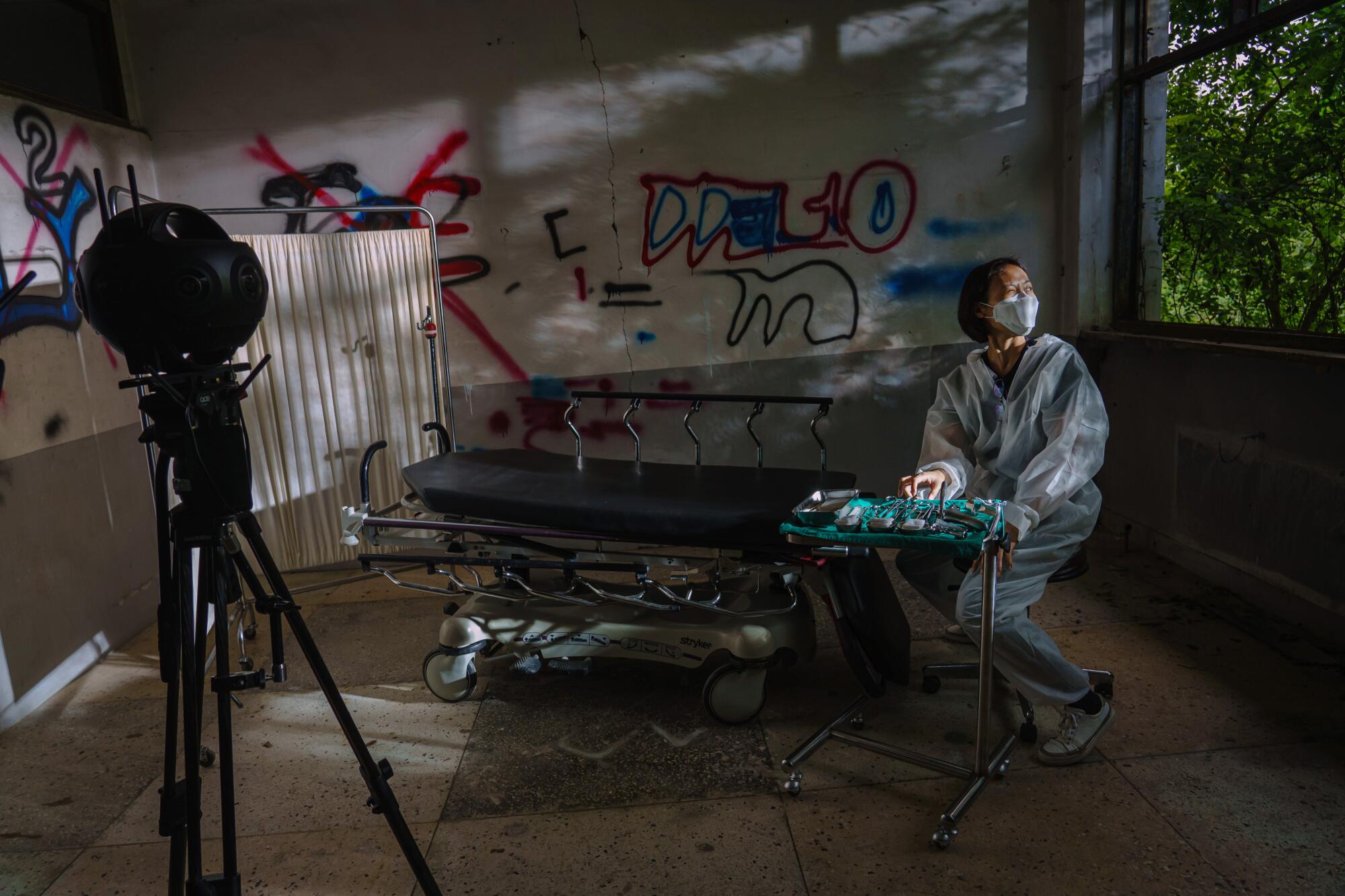
‘You can’t tell whether it’s night or daytime,’ said a woman who lives in a semi-basement home featured in the Academy Award-winning ‘Parasite.’ ‘It’s a good place to dream.’
The veteran director’s journey turned into an unexpected discovery of parallels between the current health crisis and the ordeal of women who half a century ago found themselves at the mercy of both the U.S. and South Korean governments, yet for whom neither wanted to take responsibility. In both cases, the body was subject to larger forces.
“It would have been almost unthinkable to restrict people’s bodies this way in modern society. ... But it became a universal experience,” she said. “The political is manifest in individuals’ bodies.”
::

Kim’s film is set in a now-overgrown and abandoned two-story building with barred windows once known among locals as the “Monkey House,” located in Dongducheon, a city about an hour north of Seoul where American soldiers have been stationed since the 1950s.
In the 1970s, the building with barbed-wire fences was one of several facilities where South Korean sex workers suspected of having sexually transmitted diseases were warehoused, often against their will, to be isolated and treated until they were cleared to return to brothels.
At the time, U.S. soldiers stationed in South Korea had some of the highest rates of venereal diseases among American troops anywhere in the world. But the South Korean government, concerned the U.S. would scale back its presence on the Korean peninsula, was eager to see that their needs were met — including facilitating a robust sex industry that had sprung up around bases.
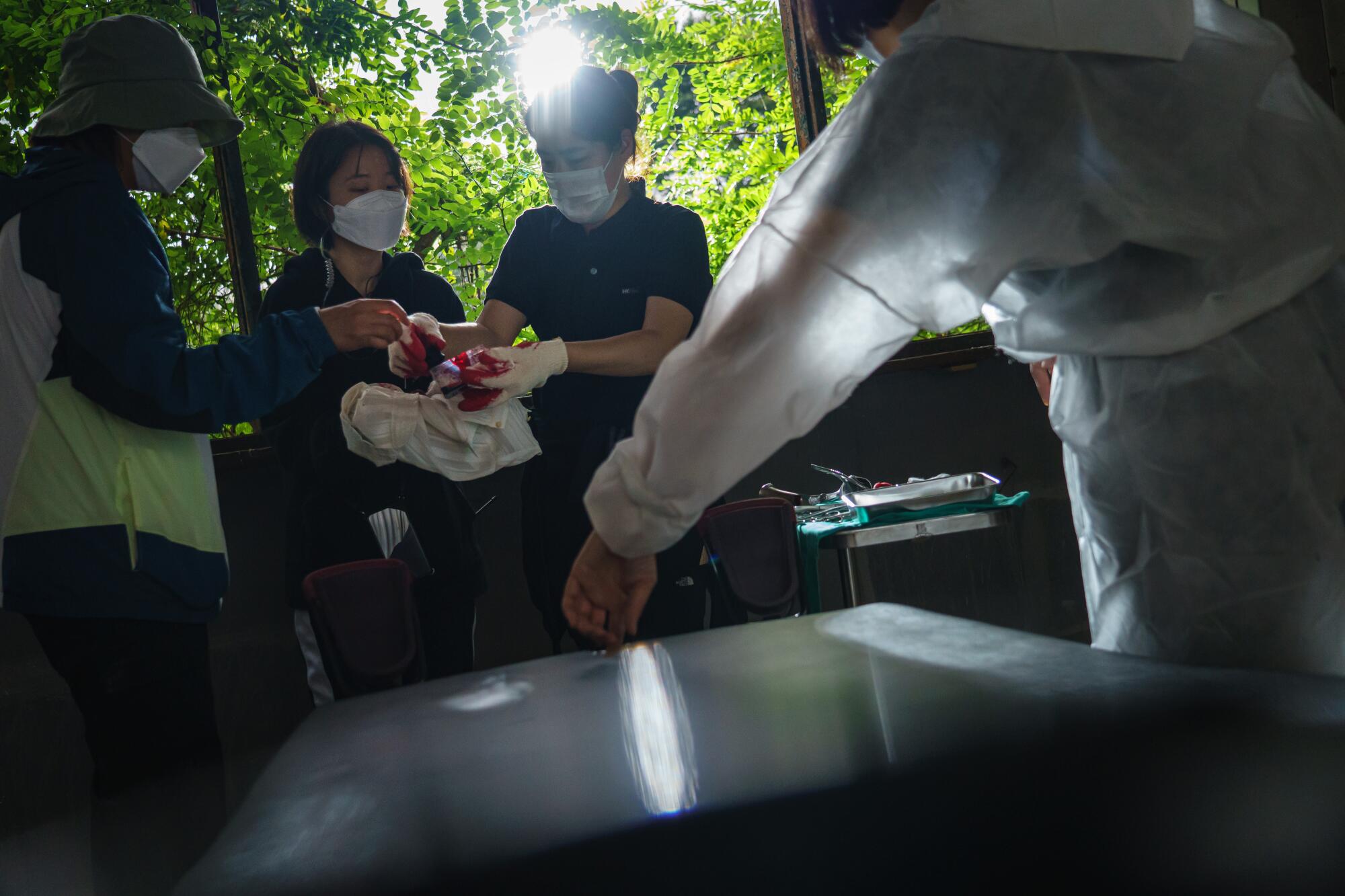
Part of that effort was an aggressive “cleanup” campaign to rid the women of sexually transmitted diseases. They were forced to wear numbered tags with health inspection records and those suspected of being infected were treated with penicillin against their will, according to testimonies of women and government records. Women said they were rounded up and confined, and feared that high doses of penicillin would lead to allergic reactions, with the possibility of death by shock.
For decades, little was publicly known about what happened to the women. Several high-profile murders of sex workers by American soldiers in the 1990s shocked the country and began raising awareness about their vulnerability and exploitation. Some of the women have sued the South Korean government in recent years for its complicity in their confinement and treatment in past decades. Their case is now pending before the nation’s highest court. Some 28,500 U.S. troops remain stationed in the country today.
“It’s unbelievable the type of forced treatment and immense control they were subject to,” said Kim.
The director had come across the “Monkey House” several years ago during her first virtual reality film project, 2017’s “Bloodless,” set in the same city and based on a true story about a brutal 1992 murder of a South Korean prostitute at the hands of an American soldier. The film won her the best VR story award at the 2017 Venice Film Festival.

She said she couldn’t believe the walls that had been witness to such pain were still standing, even though they were crumbling in disrepair, streaked with graffiti and damaged by amateur documentarians, shamans and thrill-seeking YouTubers exploring the building for its eerie past.
Kim wanted to transport viewers into the women’s experience through virtual reality. After extensive historic research and reading testimonials from women who’d been confined there, she was gearing up to shoot the film — titled “Tearless” — in 2020.
::
Watching anxiously from Los Angeles as the coronavirus numbers fluctuated in South Korea, Kim considered directing the film remotely from the U.S. by having a crew member strap an iPad to their chest so she could see what they were seeing as they moved through the building.
But South Korea, with a meticulous contact tracing regime and an early government response, was faring far better than the U.S. Film and TV productions began resuming within a couple months after the outbreak. And increasingly, Kim felt she had to be in the building — and to sense its ghosts — to direct the film the way she wanted.
In August, she landed in South Korea, where she underwent a government-mandated 14-day quarantine at an Airbnb in a busy neighborhood of Seoul. A smartphone app on her phone would immediately alert authorities if she ventured out.
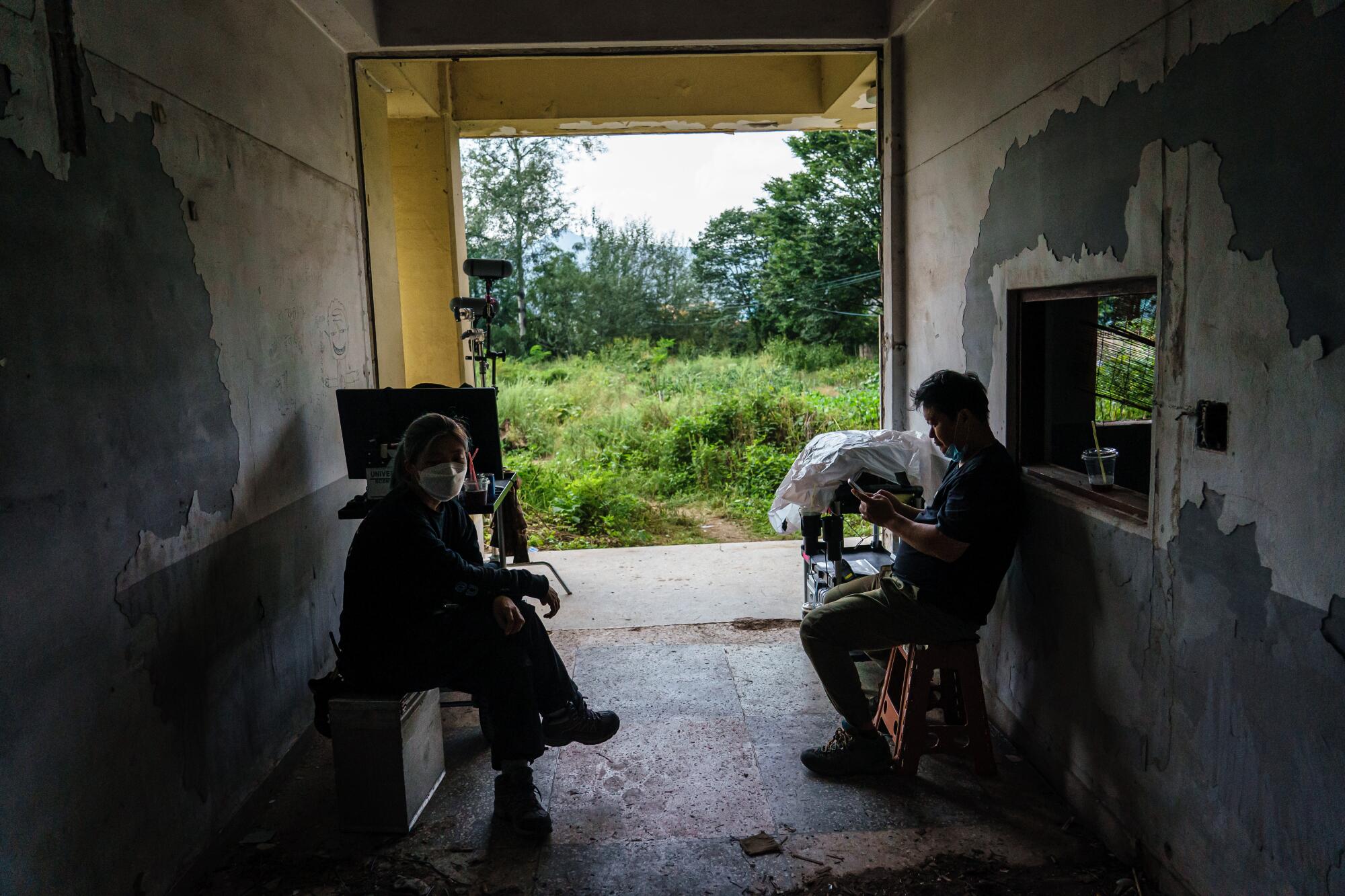
A couple days into quarantine, cut off from the world and marking the passage of time by changing slants of sunlight, she began to feel she was undergoing a somewhat analogous experience to what the isolated sex workers may have endured. Upon being identified as the source of an infection by an American soldier, at times falsely, South Korean women were confined inside the treatment facility for days or weeks at a time.
“I had no choice but to experience it in full for 14 days,” she recalled. “It helped me empathize emotionally ... even if it was 1/100th of what the women went through.”
She kept thinking back to how the health and fate of the women, many of whom were brought to the brothels by brokers as young girls from poor backgrounds, were an afterthought to the political considerations of decision makers — something that seemed to resonate more profoundly this year than most as more than 1 million people around the world have died from COVID-19.
“Political injustice becomes a matter of life and death,” she said.
::

The surgical tools glinted in the light as Kim arranged them in careful disarray.
She sat as a doctor would have at the foot of the examination bed with stirrups, transporting herself back to the 1970s. Once the scene was set, she and the rest of the 26-person crew would duck into the hallway to allow the 360-degree VR camera to capture the room in its entirety.
Silence fell throughout the building. The camera rolled. Scattered throughout the two floors were all manner of debris left behind by curious onlookers — a suitcase, a car bumper, a Yankee’s cap, multiple futons. Late-summer mosquitos incessantly buzzed about.
Producer Zoe Sua Cho said even in the span of a couple months between the crew’s preproduction visit earlier in the summer and the day of shooting in mid-September, the deterioration of the structure was noticeable.

“The building’s history and memory are disappearing,” she said. “There was an urgency to the story. The building itself is in danger.”
While there’s no telling what the world will look like by the time the film is ready for release next year, Kim said she was curious to see how the pandemic, with its loneliness, fear and graves, will color viewers’ reception of the movie.
“We’ve all experienced being locked away and isolated due to a virus,” she said. “We’ll never be able to go back.”

More to Read
Start your day right
Sign up for Essential California for news, features and recommendations from the L.A. Times and beyond in your inbox six days a week.
You may occasionally receive promotional content from the Los Angeles Times.






